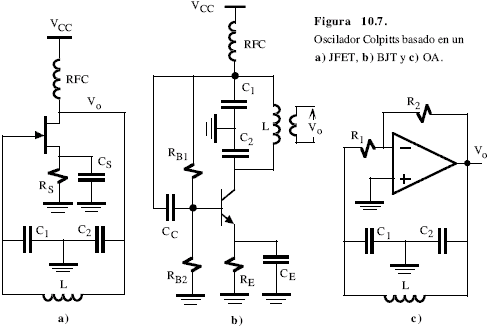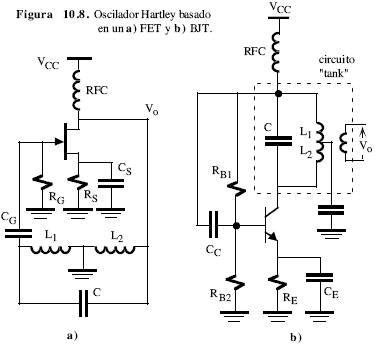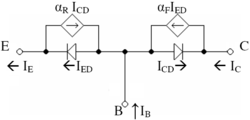In electronics, the Darlington transistor (often called a Darlington pair) is a compound structure consisting of two bipolar transistors (either integrated or separated devices) connected in such a way that the current amplified by the first transistor is amplified further by the second one.[1] This configuration gives a much higher current gain (written β, hfe, or hFE) than each transistor taken separately and, in the case of integrated devices, can take less space than two individual transistors because they can use a shared collector. Integrated Darlington pairs come packaged in transistor-like packages. The Darlington configuration was invented by Bell Laboratories engineer Sidney Darlington in 1953. He patented the idea of having two or three transistors on a single chip, sharing a collector.[2]
A similar configuration but with transistors of opposite type (NPN and PNP) is the Sziklai pair, sometimes called the "complementary Darlington."

Circuit diagram of a Darlington pair using NPN transistors
A general relation between the compound current gain and the individual gains is given by:

If β1 and β2 are high enough (hundreds), this relation can be approximated with:

A typical modern device has a current gain of 1000 or more, so that only a small base current is needed to make the pair switch on. However, this high current gain comes with several drawbacks.
One drawback is an approximate doubling of base-emitter voltage. Since there are two junctions between the base and emitter of the Darlington transistor, the equivalent base emitter voltage is the sum of both base-emitter voltages:

For silicon-based technology, where each VBEi is about 0.65 V when the device is operating in the active or saturated region, the necessary base-emitter voltage of the pair is 1.3 V.
Another drawback of the Darlington pair is its increased saturation voltage. The output transistor is not allowed to saturate (i.e. its base-collector junction must remain reverse-biased) because its collector-emitter voltage is now equal to the sum of its own base-emitter voltage and the collector-emitter voltage of the first transistor, both positive quantities in normal operation. (In symbols, VCE2 = VBE2 + VCE1, so VC2 > VB2 always.) Thus the saturation voltage of a Darlington transistor is one VBE (about 0.65 V in silicon) higher than a single transistor saturation voltage, which is typically 0.1 - 0.2 V in silicon. For equal collector currents, this drawback translates to an increase in the dissipated power for the Darlington transistor over a single transistor.
Another problem is a reduction in switching speed, because the first transistor cannot actively inhibit the base current of the second one, making the device slow to switch off. To alleviate this, the second transistor often has a resistor of a few hundred ohms connected between its base and emitter terminals.[1] This resistor provides a low impedance discharge path for the charge accumulated on the base-emitter junction, allowing a faster transistor turn-off. The Darlington pair has more phase shift at high frequencies than a single transistor and hence can more easily become unstable with negative feedback (i.e., systems that use this configuration can have poor phase margin due to the extra transistor delay). Darlington pairs are available as integrated packages or can be made from two discrete transistors; Q1 (the left-hand transistor in the diagram) can be a low power type, but normally Q2 (on the right) will need to be high power. The maximum collector current IC(max) of the pair is that of Q2. A typical integrated power device is the 2N6282, which includes a switch-off resistor and has a current gain of 2400 at IC=10A.
A Darlington pair can be sensitive enough to respond to the current passed by skin contact even at safe voltages. Thus it can form the input stage of a touch-sensitive switch.
Ricardo A. Monroy B. C.I. 17646658
EES



























